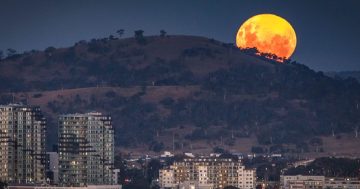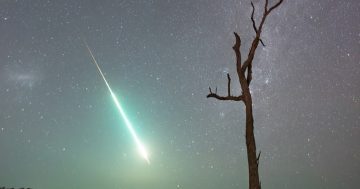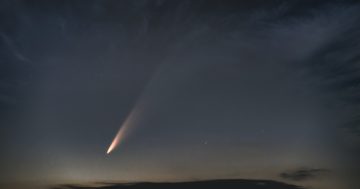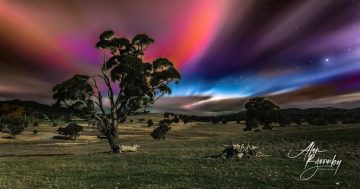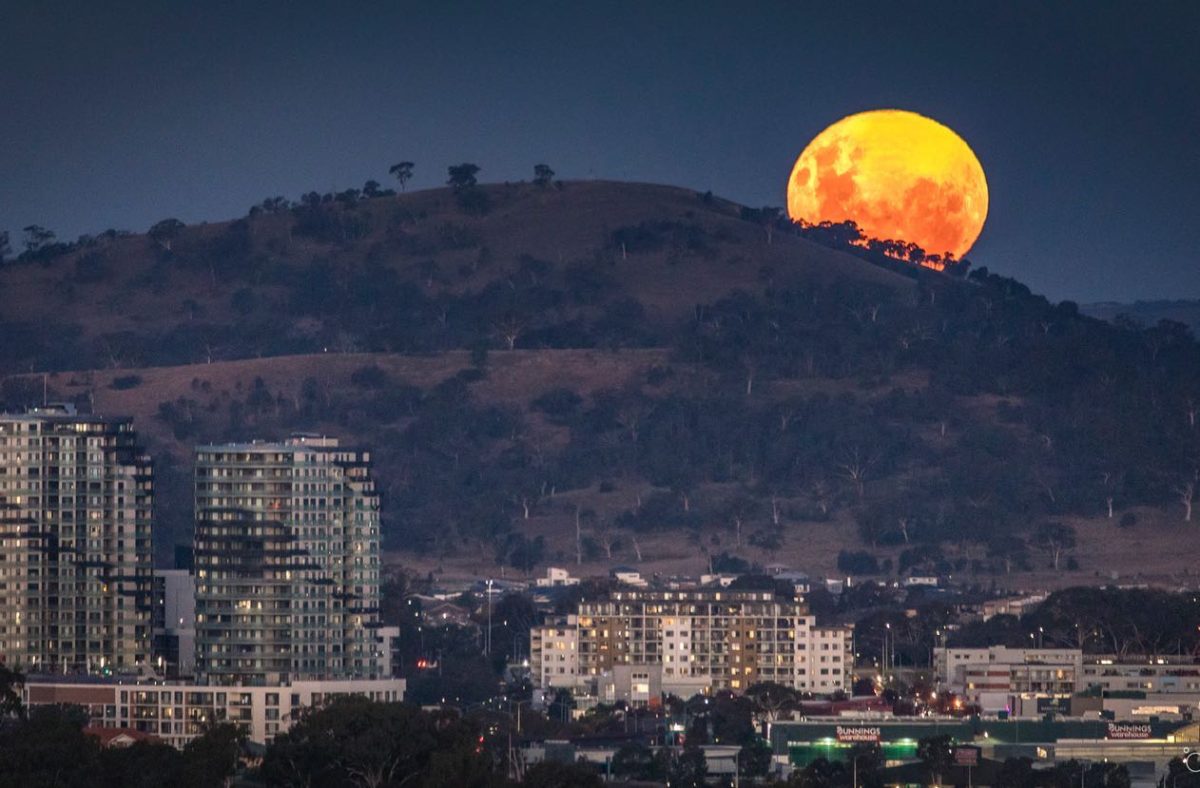
The moon rising above Gungahlin. Photo: Ari Rex.
What’s rarer than a blue moon?
A blue supermoon, preceded by another supermoon. But that’s exactly what’s happening this August.
The month will kick off with what’s known as a ‘sturgeon supermoon’ tomorrow morning (Wednesday 2 August) and end with a ‘blue supermoon’ on Thursday 31 August.
‘Supermoon’ is the nickname for when there’s a full moon at the same time the Moon is closest to Earth.
This is because the Moon’s orbit around Earth isn’t a perfect circle, so there are times when it’s 363,396 km from us – called a ‘perigee’ – and other times when it’s 405,504 km from Earth – called an ‘apogee’.
When a full moon coincides with an apogee, it’s called a ‘micromoon’.
A supermoon can appear up to 17 per cent bigger than a micromoon, and 30 per cent brighter.
But while the whole night sky might not be taken up by the Moon as many photos seem to show, there will be other special effects.
“Even though 17 per cent doesn’t make a big difference in detectable size, a full supermoon is a bit brighter than other moons throughout the year,” NASA says.
“It might be hard to detect a supermoon visually, but it does have an effect on Earth. Because the Moon is in its closest approach to Earth, it can cause higher tides than usual.”

Want to see a really big moon? Questacon has one hanging up as part of its Under the Moon gallery. Photo: Questacon.
Australian National University (ANU) astrophysicist and cosmologist Dr Brad Tucker says you would only notice the difference if you put a full moon alongside a supermoon.
“You won’t notice the Moon as dramatically bigger or bright tonight,” he says.
Supermoons only happen three to four times a year, and always appear consecutively. Last month’s full moon was also a supermoon.
US publication The Farmer’s Almanac reports this month’s will be the “closest, biggest, and brightest full supermoon of 2023” due to it being “exceptionally close” to Earth.
“The next time we’ll have a closer full supermoon is 5 November 2025, when the moon lies 356,980 km from Earth.”
‘Sturgeon moon’ is another non-scientific term, this time for the full moon in August.
It’s inspired by the large number of sturgeon fish found in North America’s Great Lakes at this time of year. The sturgeon is America’s largest freshwater fish species, growing over two metres long and weighing around 90 kg.
Other names for August’s full moon include Grain Moon, Corn Moon, Lynx Moon, and Lightning Moon, for similar reasons.
Because the lunar calendar marches to the beat of a different drum to the one we use, every 2.5 years they overlap and we end up with two full moons in a calendar month.
The second of these is called a ‘blue moon’, even if it has nothing to do with the colour.
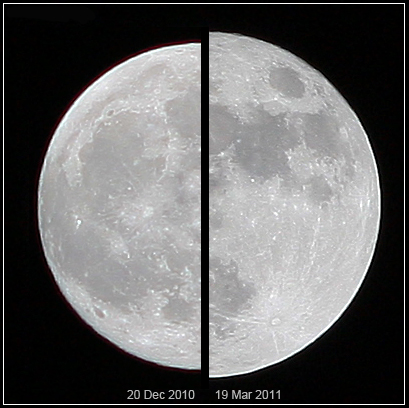
A full moon compared to a full supermoon. Photo: Marco Langbroek.
The best time to see a full moon is just before sunrise, when it’s closest to the horizon.
Dr Tucker says this gives the “best effect”.
“This is partially due to the atmosphere of the Earth, but also an optical illusion as you have objects to compare to – buildings, trees, and other objects on the ground that make it look bigger.”
For tomorrow’s sturgeon moon, that’s 4:32 am (AEST).
For the blue supermoon on 31 August, the best time to see it is 11:36 am.












